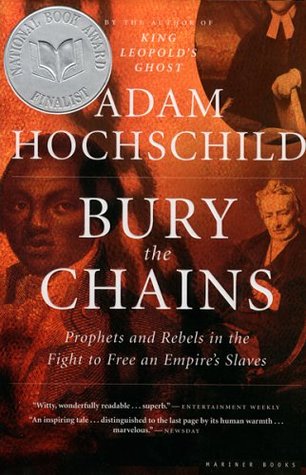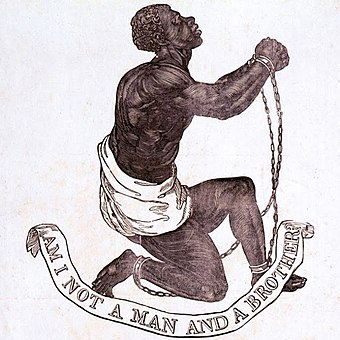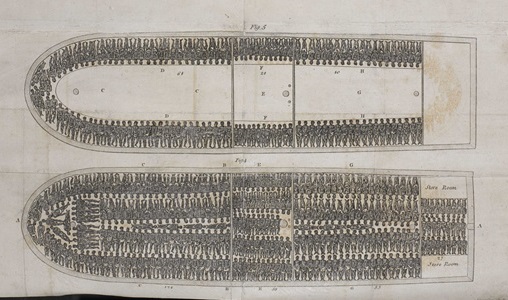Bury the Chains (Book Review)

Upon completing Bury the Chains by Adam Hochschild it dawned on me that many of my favourite books are in the form of narrative history. A review of the books that I have given five stars to on Goodreads confirms this: Beyond Hitler’s Grasp (Bar-Zohar), Return of a King (Dalrymple), The China Mission (Kurtz-Phelan), and Paris 1919 (MacMillan), to name a few. By combining a compelling human story with ample historical background, narrative history strikes the right balance between drama and empiricism. When I contrast the ease with which I read Bury the Chains to Africa Since Independence (see July Reads), it is clear to me that I could never have been an academic historian. Personal preferences aside, Bury the Chains is an objectively good book. It tells a remarkable story of how Britain abolished the slave trade in 1807 and slave holding in 1838.
That the abolition campaign was waged through democratic political means, at least initially, makes its success even more impressive.[1] When the movement began in the late 18th century, Britain’s plantation colonies in the West Indies were the cash cow of the empire. Many members of the Parliament and the House of Lords had a direct financial interest in slave-based economic output, as did major institutions like the Church of England and the University of Oxford.
Hochschild’s narrative centres on four main characters: Thomas Clarkson, William Wilbeforce, John Newton, and Granville Sharp, with Clarkson as the unsung hero. He was largely responsible for founding The Society for Effecting the Abolition of the Slave Trade, the primary anti-slavery organization in the British empire, which he tirelessly promoted. Clarkson’s contributions are overlooked because he was not part of the Newton/Wilberforce evangelical establishment which wrote most of the historiographies on the subject in the proceeding decades. A good proto-Victorian, Clarkson used his boundless energy to travel hundreds of miles on horseback across the country rallying English towns and cities to the cause of abolition.
Granville Sharpe came from a long line of musicians, renowned for performing their concerts on a barge on the Thames! It was his legal activism, however, that was his most important contribution to abolitionism. He helped establish a common law basis for the illegality of slavery. In doing so, he was instrumental in bringing about the famous Somerset v Stewart ruling which guaranteed that slaves brought to England could not be forcibly removed from the country and sold into slavery.[2] Sharpe was known to the small African community in London at the time. He was considered a trustworthy ally willing to take up legal action on behalf of runaway slaves. Sharpe, like Clarkson, was one of the founding members of the The Society for Effecting the Abolition of the Slave Trade.
As a young man John Newton was impressed into the Royal Navy and “escaped” by transferring to a merchant vessel engaged in the West African slave trade. He is remembered today for his conversion to evangelical Christianity and composing the well-known hymn Amazing Grace. Newton became an Anglican priest and befriended powerful evangelicals like William Wilbeforce. However, Hochschild points out that the actual historical record shows Newton to be a more nuanced character. Despite his conversion, Newton’s scruples allowed him to continue working the slave trade for many years. Due to his credibility as an Anglican minister, Newton’s eventual denunciation of the slave trade (Thoughts Upon the Slave Trade) was powerful evidence the abolitionists could point to, although he was hardly outspoken on the topic.
Before reading Bury the Chains, the only name I knew was William Wilbeforce as a famous parliamentarian. In addition to abolition, he championed a variety of causes, including the prevention of animal cruelty and puritanism. Wilbeforce’s fame and political power allowed him to shape the narrative around the abolition of the slave trade as a mainly religious one.
In addition to these four men, the book involves a large cast of interesting persons of the Georgian Era. Olaudah Equiano was the most prominent African alive in Europe at the time, and Josiah Wedgwood was an extremely successful potter and entrepreneur who used his artistic skills to create some of the movement’s best propaganda, including a medallion with the famous inscription: Am I not a Man and a Brother?. The delightfully scandalous James Steven also appears. In his younger years, he had a child with his best friend’s fiancée and fled to Barbados to avoid scandal. There, he saw the appalling conditions of West Indian slaves and began to correspond with prominent abolitionists. His legal acumen played an instrumental role in crafting the legislation that would ultimately bring about the Slave Trade Act.

Wedgwood's extremely popular anti-slavery design
One of the reasons why Britain did not continue to fight over her rebellious American colonies in the 1780s was that they were not as valuable as a modern reader might expect. For example the value of exports from Bermuda, Barbados, and Jamaica were more than four times higher than that of Virginia and Maryland in 1770s. To win a successful campaign, the abolitionists had to convince policy makers and the British public that the slave trade should be abolished on purely moral grounds, and that these reasons alone obviated economic considerations. But at the same time, the abolitionists also argued that the economic benefits of slavery were overstated. This communication strategy is analogous to contemporary climate advocacy,which argues that we need to reduce our carbon footprints whatever the cost while also arguing that the Green Economy will usher in a new era of prosperity and jobs. Like today’s climate activists, advocates of abolition faced a well-funded lobby backed by those economic interests which stood to lose from reforms.
The campaign to abolish the slave trade was sui generis for its time and established the entire playbook for modern human rights campaigns. Boycotts. Pamphlets. Petitions. Posters and buttons. Direct-mail fundraising. A national organization with local chapters. It is the case study for organizations seeking policy change through mass politics.
While the goals and the moral tone of the abolitionists would match our own today, their motivations would not fit in with modern human rights activists.The evangelical political movement led by Wilbeforce, for example, was concerned as much with “public vice” as it was with slavery. Even those whose motivations seem more aligned with contemporary ethics, like Clarkson, were caught up in broader enlightenment debates. Like many of the non-evangelical abolitionists, he was a strong supporter of the French Revolution and stayed too sympathetic even after the guillotine became commonplace. As always the historic political compass is not easily mapped to the present.

The famous Brookes slave ship poster
Even though every abolitionist wanted to end slavery as an institution, most agreed that the politically realistic policy would be to end the trade rather the the ownership of slaves for several reasons. First, an end to the slave trade would force plantation owners to improve the care of their existing slaves as the death rate among slaves matched their owner’s interest in their well-being. Second, the economic stakes of trading slaves were not exactly aligned with those of owning slaves, allowing for wedges to be driven between different interest groups. Furthermore, once the British plantation owners were no longer able to trade in slaves, it would now be in their interest to support the Royal Navy in preventing other European nations from trading in slaves lest they be put at a disadvantage. The Haitain revolution and associated Caribbean slave revolts in the 1790s were politically damaging to the abolitionists as the West India lobby was able to portray the insurrection as related to the campaign for abolition. However after 1807, subsequent slave revolts in the 1816, 1823, and 1831 required a British military response which was decidedly unpopular popular with the public due to the futility of the wars and high casualty figures (almost all from diseases though). Once it became clear that slavery was unsustainable, the British parliament passed the Slavery Abolition Act in 1833, which would ban the owning of slaves in the empire, but ultimately reimbursed slave owners for their lost property. The amount of money dedicated to compensation to former owners amounted to 5% of Britain’ GDP at the time (40% of government revenues).
Why did the move to abolition occur in the late 18th century in England specifically? Was the same force which led to the publication of The Wealth of Nations and the Declaration of Independence responsible for an increasingly enlightened view of slavery? Hochschild puts four interesting hypotheses forward to explain the remarkable phenomenon. First, Britain was unique in the number and importance of its religious minorities. The Quaker’s were some of the most strident abolitionists within Christendom and played an instrumental role in financing and organizing the movement. While Britain was one of the most democratic nations in the 18th century the vast majority of men, let alone a single woman, were ineligible to cast ballots in parliamentary elections. The abolitionist movement was able to channel Britain’s latent democratic culture into political expression which could be used by all of its citizens, including women. Furthermore, petitions had to be received by parliament and could be signed by any citizen.
The third, and possibly most important, factor which Hochschild presents was the trauma which impressment, e.g. naval conscription, had on the nation’s psyche. While Britain never had military conscription, men with any seafaring ability (of which there was a significant number in Britain) were liable to be kidnapped by press gangs and dragged onto a Royal Navy vessel. Horror stories of grooms being impressed on their wedding day shocked the public imagination. While impressment might have been essential to the Royal Navy’s clear military superiority over her rivals in the 18th century,[3] it did instil a sense of injustice at a man’s liberty being stolen from him and helped to create a fear of white slavery which was tapped into by the abolitionist movements.
A fourth factor could be called British exceptionalism: the idea that United Kingdom, and England in particular, has a unique cultural ethos centred on inalienable rights in a land where the “air is too pure for a slave to breathe in”. While it easy to be swept up in Rule Britannia romanticism, Britain was singular its constitutional and social composition in the 18th century. Hochschild gives this view support in Chapter 15 of the book. When the abolitionist committee first met in 1787 there were less than a dozen individuals publicly advocating for the abolition of the slave trade. Yet within 20 years the Slave Trade Act had been signed into law, 300,000 individuals were engaged in a sugar boycott, and over 1.5 million individuals had signed anti-slavery petitions. No other country on earth at this time likely matched this level of social dynamism. Consider that the first French anti-slavery petition did not occur until 1844 and received fewer signatures than the single city of Manchester.
Economic modernization and infrastructure allowed Britains to traverse the country at a rapid clip using well-maintained toll roads and direct coach lines. The British Post Office had an all weather mail coach that could deliver a letter from London to Bristol in 16 hours (probably faster than what occurs today!). Because of Britain’s culture of coffeehouses and the free press, the country had twelve daily newspapers in 1780s and dozens of other newspapers and magazines throughout the country. In contrast the first French daily appeared in 1777. And whereas the press was free to criticize and mock the government, France employed 178 official censors. London was also unique in its proliferation of debating societies; where the topic of slavery was common. Britain’s literary culture was also unique.
For Dissenting, or non-Anglican, churches, whose members would play a disproportionate part in the anti-slavery movement, reading was at the heart of a devout life… At the eighteenth century’s end there were more than a hundred libraries in London… The country had well over a thousand bookstores, plus sidewalk bookstalls by the dozen in every city; twenty booksellers and twelve printers did business in Newcastle upon Tyne alone. The London bookdealer James Lackington’s Temple of the Muses … was so big, it was claimed, that a coach and six horses could drive around inside.
Whether these factors played a meaningful role is ultimately difficult to know, but it does present an interesting cultural argument. While the British have a right to be proud of their role in the history of abolishing chattel slavery, such claims need to be tempered by a close reading of history. Before abolition, it was Britain’s colonial system which helped to institutionalize slavery in Americas. The abolitionists succeeded because they were shrewd political tacticians who fought a skilled battle over many decades. The British public were sympathetic to their cause, but there was only so much they were willing to sacrifice for Africans. Ethical policies prevail when the incentives of the state and economic elites are aligned with what we would consider moral outcomes. Ultimately it was Britain’s wealth, economic diversification, and military might that allowed it to tackle the slave trade. The reason that the Arab world never had an abolition movement before the 20th century was that no institution had the economic resources or incentives to do so. Indeed slavery in the Arab world has been widespread throughout the 20th century. Even if there are good institutional reasons for Britain’s success at abolition, it would never have reached fruition without its tireless advocates.
-
After the slave trade was banned in the British Empire, a full sixth of the Royal Navy’s fleet waged a multi-decade campaign to end the Atlantic Slave trade. The British parliament’s will had to be backstopped by the apogee of naval power at the time. ↩
-
Lord Mansfield, the presiding judge, was at pains to ensure his ruling did not actually adjudicate whether slavery was illegal. His ruling still allowed for the possibility of slaves to be brought to Britain and owned, but not sold abroad against their will, which was the circumstance that James Somerset found himself in. ↩
-
At the decisive Battle of Trafalgar around half of the Royal Navies crew were impressed sailors. ↩
